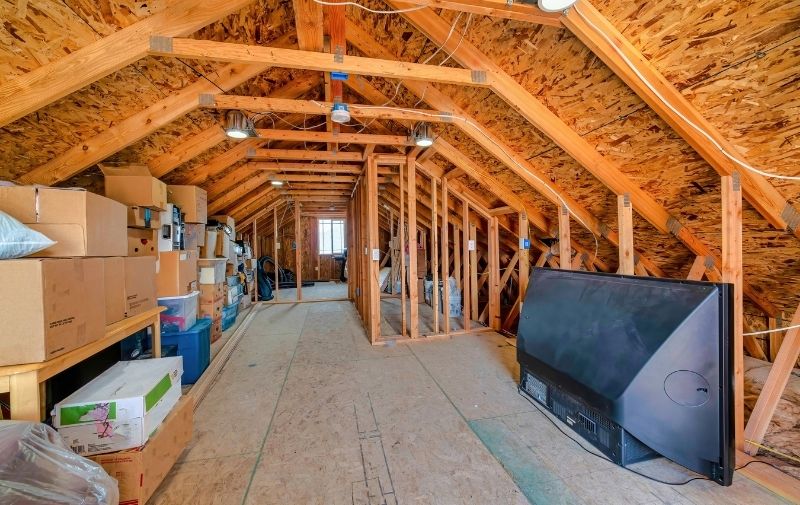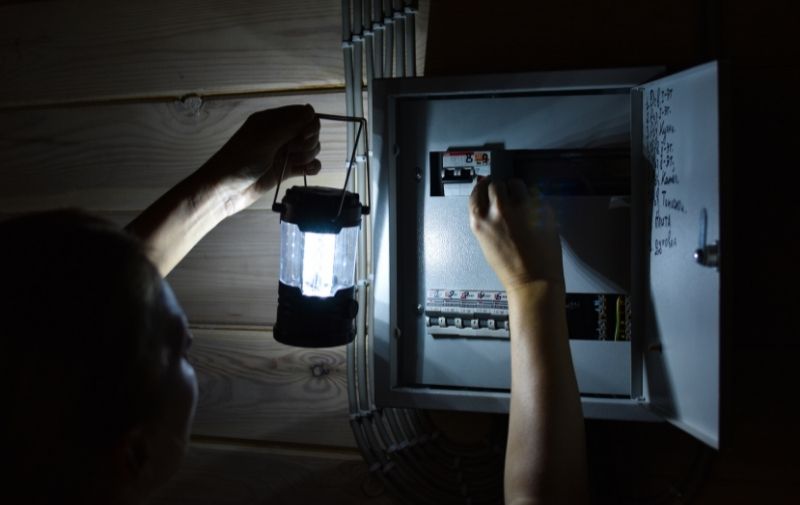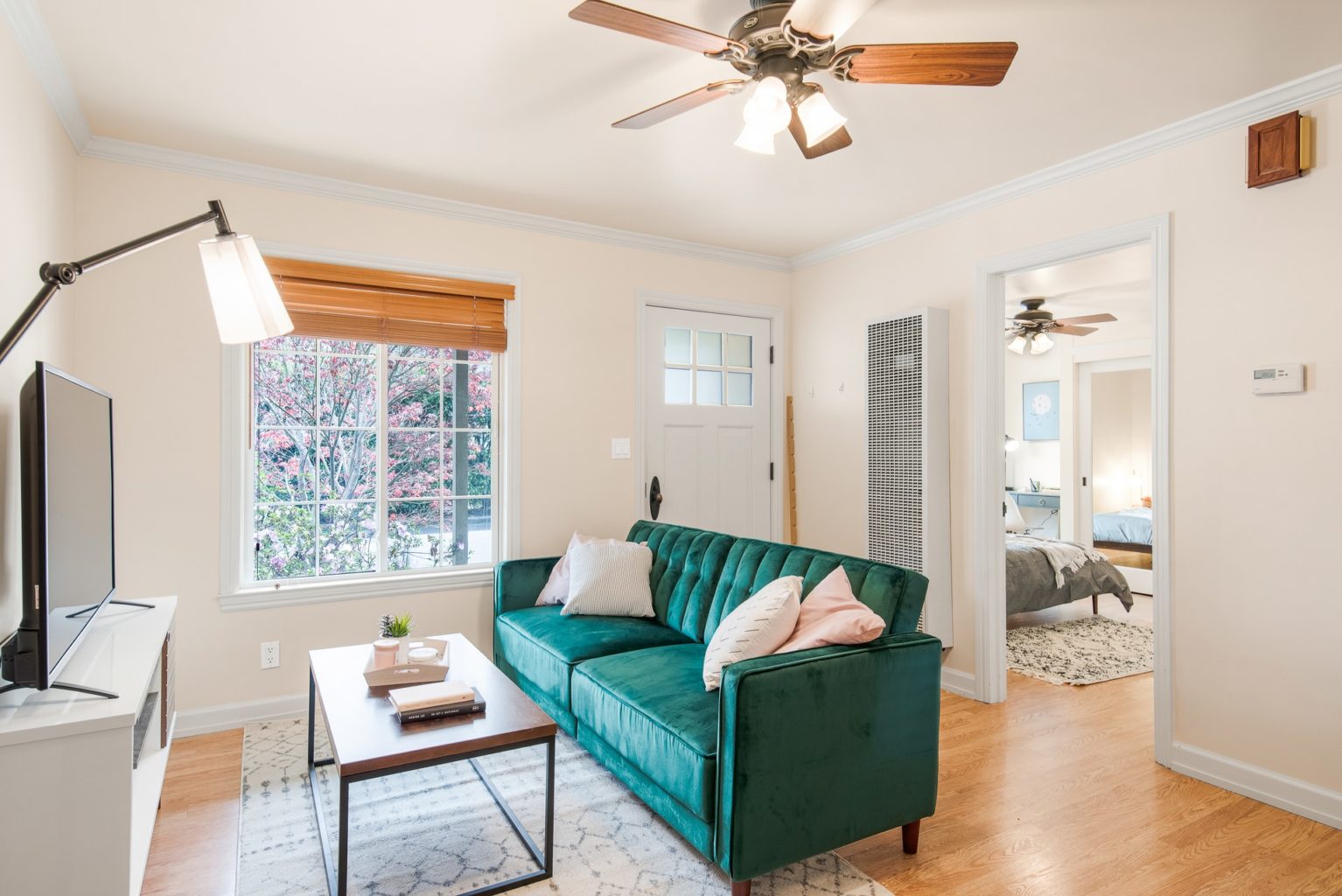Ceiling fans are experiencing a resurgence in popularity as more homeowners turn to them to cut heating and cooling costs in a sustainable way. If you’ve spent any time in a hot climate, you know that ceiling fans are a must-have for hot, humid summers — they can make a huge difference in the comfort level of a room in the summer, while still allowing you to keep your thermostat set to a budget-friendly temperature. And in the winter, you can reverse the direction of your fan’s blades, which allows it to push warm air down from the ceiling and recirculate it in the room, keeping you warmer without the need to spend a fortune on heating.
If you’re like most homeowners, you’re probably considering installing ceiling fans (or replacing your old fan) simply for the comfort and cost savings. But ceiling fans aren’t just about comfort. They can also be a design element. Today’s ceiling fans are sleek and stylish, available in designs that fit every aesthetic. So you can choose a fan that blends into the background, or one that will serve as the aesthetic focal point of the room. The choice is yours — here’s what you need to know to make the right one.
Your Fan Size Needs to Match Your Room’s Square Footage
Ceiling fans come in sizes ranging from 29 inches across to 60 inches or more. If you choose a fan that’s too big for your room, it’s going to feel like you hung a helicopter from the ceiling, but if you choose a fan that’s too small, you definitely won’t be getting the cooling breezes you hoped for.
Smaller fans are appropriate for smaller rooms, and larger fans for larger rooms, but you might find that you need to special order very small or very large fans — most homeowners don’t bother hanging ceiling fans in small rooms like bathrooms and mudrooms, although it can be done.
Before you go shopping for ceiling fans, measure the square footage of the rooms you’ll be hanging them in. If your room is 75 square feet or smaller, you need a fan on the smaller end of the scale — no larger than 36 inches. If your room is 76 to 144 square feet, size up to a 36- to 42-inch fan. If your room is 145 to 225 square feet, size up again to a 44- to 50-inch fan. For rooms 226 to 400 square feet, grab a fan that’s at least 50 to 54 inches. For larger rooms than that, look at fans 60 inches or larger.
Choose the Accessories and Features You Need
What features and accessories do you need to make the fan work in your space? It depends. Your new ceiling fan should hang at least eight inches from the ceiling, and eight or nine feet from the floor. If you have low ceilings, you’re going to need a low-profile ceiling fan that mounts flush to the ceiling, but if you have high ceilings, you’ll need to use a ceiling fan downrod to lower your fan to the correct height. If your ceiling is pitched, a downrod can help you hang your fan with the clearance it needs to turn without hitting the pitched ceiling.

If you’re removing an old light fixture but not installing the ceiling fan in the same hole — as you might if you want to attach it directly to a joist, for example — you’ll need a ceiling medallion to cover the old hole (and make your new fan look fancy). They’re pretty easy to install with glue and finishing nails.
Ceiling fans are heavy and need to be attached to a support brace in the ceiling if not fastened directly to a joist. If you can access the ceiling from above, you can install a wooden support brace between the joists over where you want to put the fan. Just screw a length of two-by-four between the joists. If you don’t have access to the joists from above, though, you’ll need a metal expanding brace that can be inserted through a hole in the ceiling and anchored into the joists from below.
If you’re installing your fan in a room that gets moisture, like a bathroom, make sure you get a damp-rated fan. If you’re putting your fan outside, on a porch, for example, you’ll need an indoor/outdoor fan, because indoor only fans aren’t sealed against the weather. You can even get marine-rated fans for outdoor installation in coastal areas, where sea winds might quickly destroy a standard outdoor fan.
Other features are available, too, including wall controls, remote controls, custom pull cords, light shades and globes, and so on. You can even get a fan with smart connectivity if that’s what you want. Consider what features you’ll need and use carefully.
Match or Contrast Your New Fan to Your Decor
Today’s fans are much more attractive than the old-fashioned fans of yesteryear. You can certainly find a fan to match your home’s design aesthetic or unique architectural elements, whether you want to match or contrast your decor. If you want to downplay your fan’s appearance, choose one that matches the ceiling. If you want your new fan to stick out, match the color of the fan blades to that of your hardwood floor, wood trim, or wood furniture. You can also match the metal trim on your fan to your room’s door knobs and other hardware, like lamps, light switch plates, and other fixtures. For example, complement your stainless steel kitchen appliances with a sleek, modern stainless-finish fan.
Ceiling fans can really change the look and feel of a room, and help you and your family stay comfortable, no matter the weather. Spruce up your home with a new ceiling fan, and watch the compliments roll in.























Leave a Reply